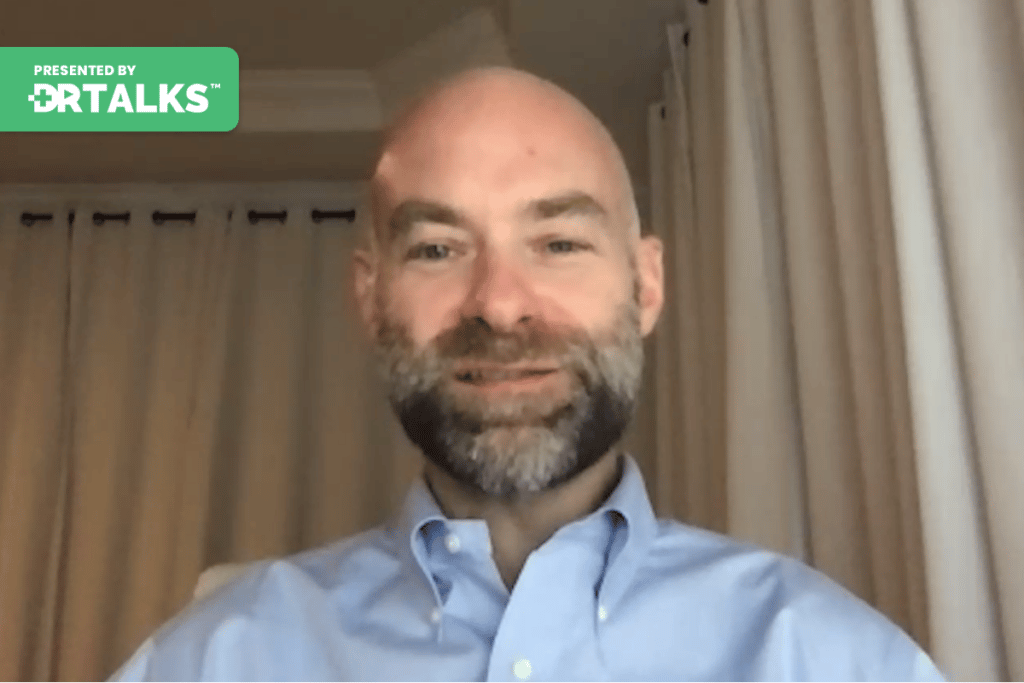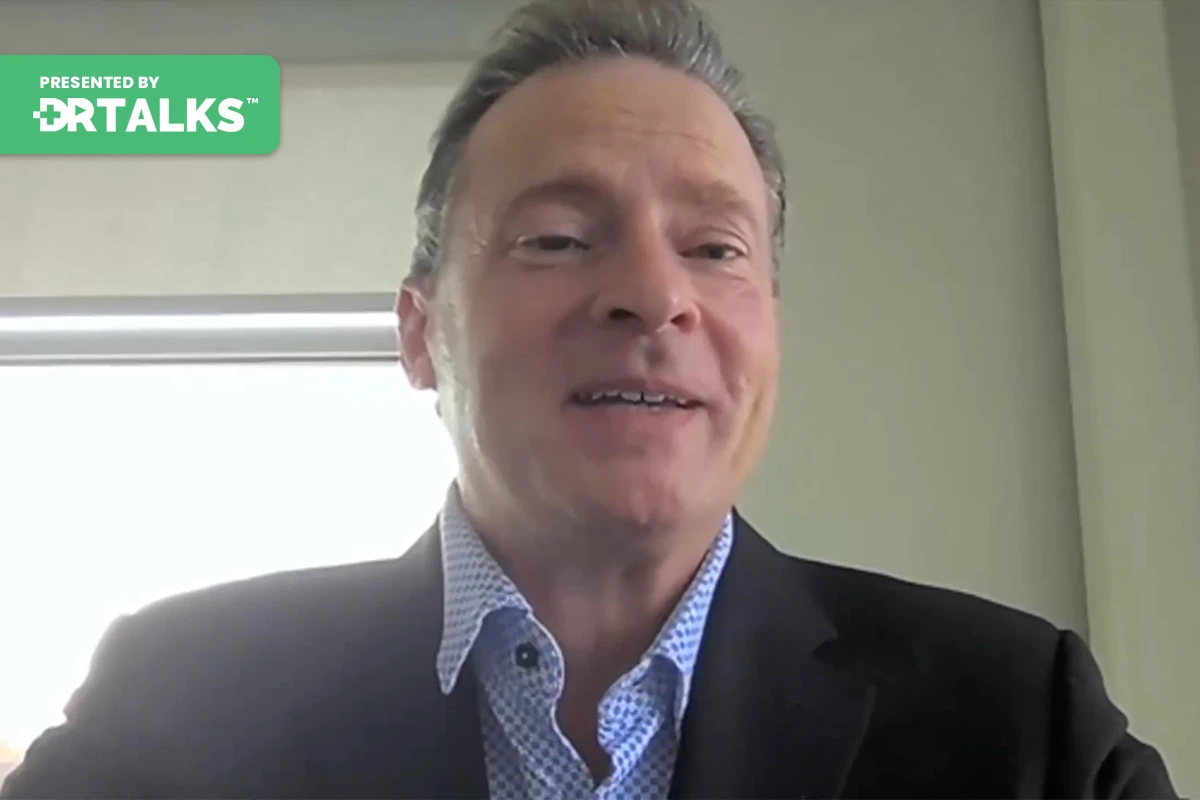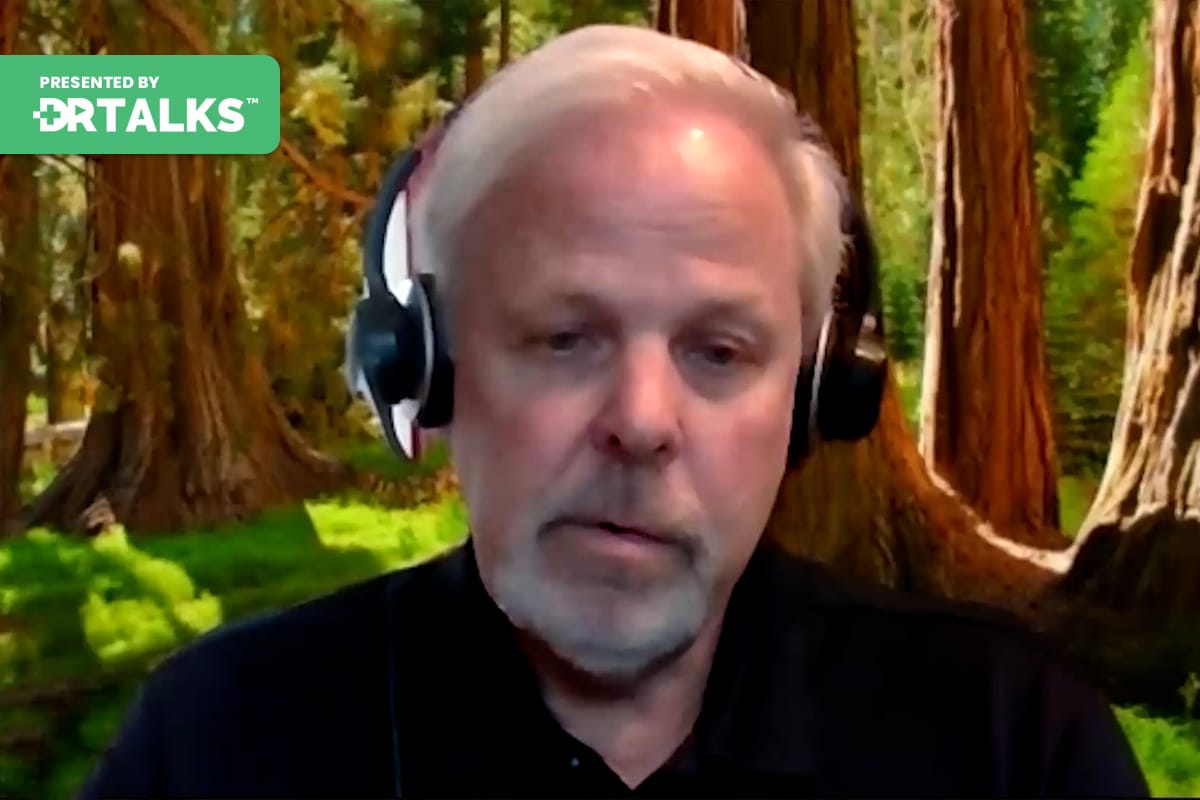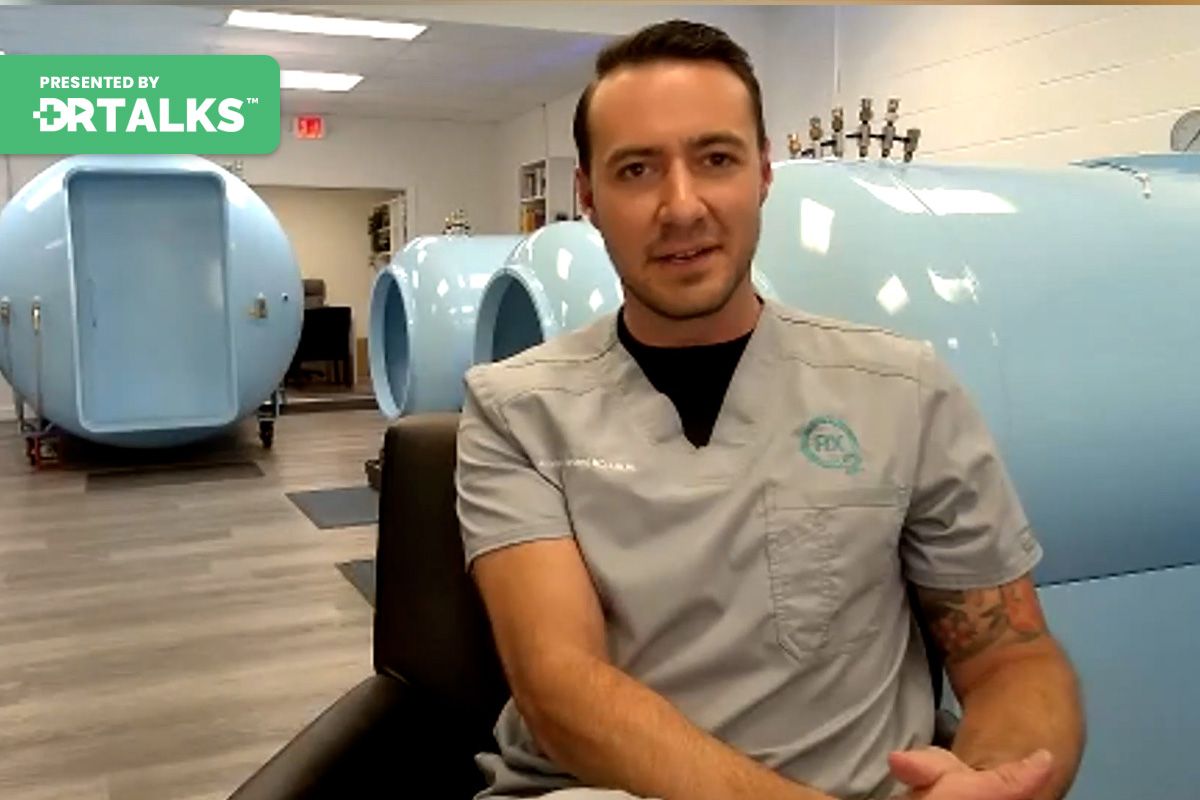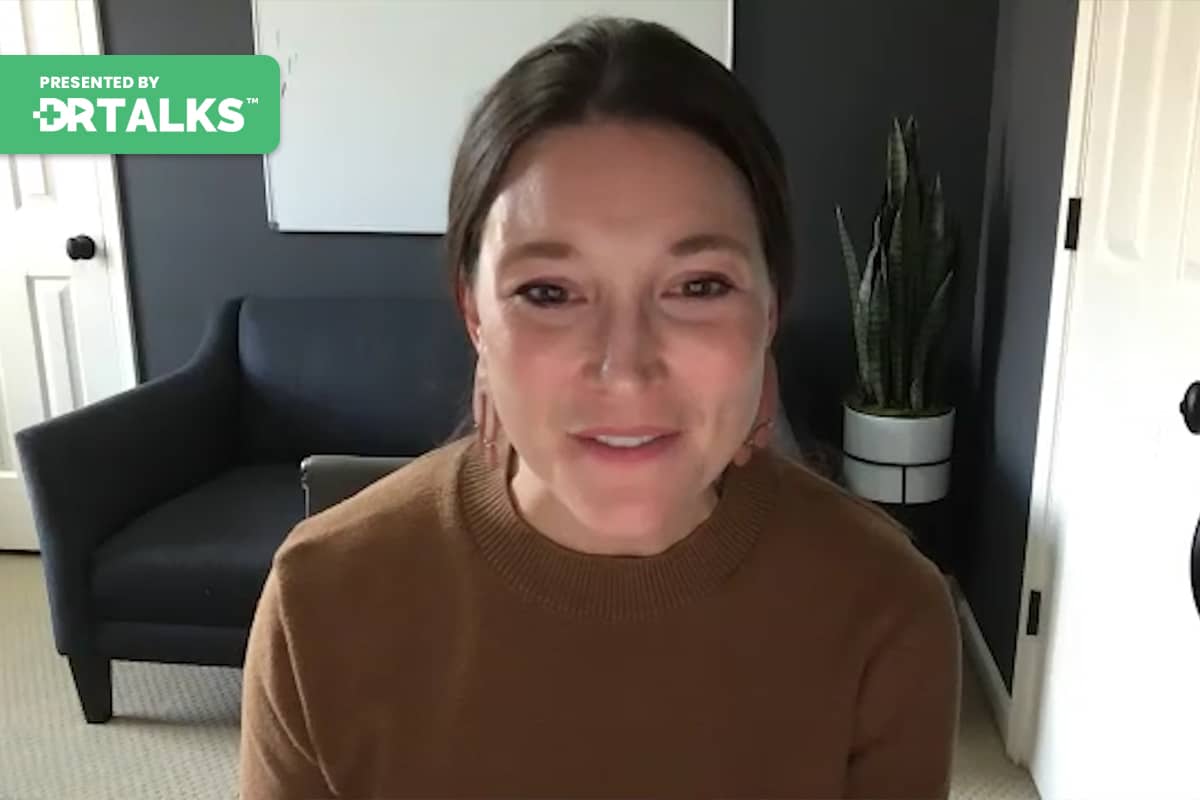Join the discussion below

Michael Karlfeldt, ND, PhD, is a Board Certified Naturopath (CTN® ) with expertise in IV Therapy, Applied Psycho Neurobiology, Oxidative Medicine, Naturopathic Oncology, Neural Therapy, Sports Performance, Energy Medicine, Natural Medicine, Nutritional Therapies, Aromatherapy, Auriculotherapy, Reflexology, Autonomic Response Testing (ART) and Anti-Aging Medicine. Dr. Michael Karlfeldt is the host of... Read More

An accomplished inventor, JP received his undergraduate degree in aeronautical engineering from the Massachusetts Institute of Technology and worked at the Air Force National Laboratory, Lincoln Laboratories. He holds both law and mechanical/materials engineering graduate degrees from Duke University. JP trained as a patent attorney in New York and is... Read More
- Autonomic nervous system’s impact on our innate immune system causing persistent inflammation
- The consequences of prolonged inflammation (mitochondrial dysfunction, reactive oxygen species generation, disrupted iron metabolism, insulin resistance, glucose production, dysregulated angiogenesis, etc.)
- How stimulation of the vagus nerve modulates the key cells of the innate immune system (regulating inflammation through depolarization of macrophages
Related Topics
Michael Karlfeldt, ND, PhD
Well Joseph Peter Errico, JP. I’m so excited to have you here talking about something that I’m, I’m so extremely passionate about which is the vagus nerve and people are recognizing the importance of that more and more with all the chronic diseases that we’re dealing with. So I’d like people to get to know you a little bit. You’re, you’re an accomplished investor, received your undergraduate degree and aeronautical engineering from the M. I. T. And worked at the Air Force National Laboratory Lincoln Laboratory’s hold both law and mechanical materials engineering graduate degrees from Duke University, trained as a patent attorney in New York and is the author of treaties on international intellectual property law through ongoing collaboration with investing partners.
You along with fellow investors and board members Thomas J. Errico previously founded and sold or took public numerous MedTech ventures including fastenetics, K two medical systems, 84 pharma, E two and spine core products conceived by these startup companies have generated more than $15 billion in sales to date and delivered over 500 million and liquidity events to their investors. You also, you also served as CEO of spine core from the inception of the company through its sale and also named investor on more than 125 issued US patents and is a named in inventor, I’m sorry named inventor. More than 100 and 24 issued us patents named inventor on more than 230 pending US applications, additional patents and patent application outside the U. S. On which you are the named inventor number greater than 250. In addition to his current role as chief science of strategy officer. Continue to make significant inventive contributions in all aspects of electric course key patent portfolios along with the clinical and market validation of the company’s products and their indications. So I mean you’ve been around, you’ve been busy.
JP Errico
I’ve been working in the medical device field for a number of years. I spent I sort of cut my teeth as that bio describes in the spine field. Working with my uncle who is a world renowned spine surgeon. We developed a number of different products. But back in the year 2005 I began to branch out from that into the neuromodulation field and also into the pharmaceutical world and have been involved in a number of different companies but the one that’s really been nearest and dearest to my heart has been electric or which is the company that is focused on vagus nerve stimulation and I’m looking forward to getting into that conversation with you.
Michael Karlfeldt, ND, PhD
And just out of curiosity and obviously we’re gonna get deeper into what the vagus nerve is and the role of it throughout the body. But I mean out of everything, I mean here you’re you know five I mean billions of dollars of product and this is the one that floats your boat. So to say this this is where you’re spending your time. I mean, why is this so exciting compared to everything else that you’ve done?
JP Errico
Well, that’s a great question. And I think it goes back to the late 1990s, I was working with my uncle to develop spine implants. I mean basically screws and rods that were inserted into the spine in order to hold it stable. And I was introduced to one of my uncles colleagues, a famous neurosurgeon by the name of Ali Rezai. He was working in New York at the time. He was shortly after I met him probably a year or two. He was taken away from us and brought over to the Cleveland clinic where he spent a number of years. But he taught me something about implanted neuromodulation devices. He was working. He was one of the early pioneers in the field of using deep brain stimulation to treat Parkinson’s disease and essential tremor. And I was absolutely fascinated by how effective the therapy was.
And other than the surgical implantation process. It was a largely a benign treatment. There was virtually no side effects to the therapy. So I thought that this was really a remarkable way to treat. And so he told me something which I took to my heart and I didn’t realize how important that one sentence was going to be to me in the rest of my life. But what he said was anytime anybody has ever cut a nerve and as a result of cutting the nerve, gained a clinical benefit, then there’s the opportunity to stimulate that nerve and gain the same clinical benefit without necessarily losing that structure. And so with that in mind, I ended up going off after he left and starting another company and selling it off. But in the back of my mind I said, I want to get back to this because to me it’s as close to magic as I’ve ever seen. And uh I want to be part of it.
Michael Karlfeldt, ND, PhD
That’s really and so vagus nerve, I mean, which is gonna be 11 of our main discussion. It is connected to the body in so many different ways. And especially when we’re looking at what we’ve dealt with, you know, the last number of years with with with C0V!D and you know, pandemic and and we’re looking at that kind of inflammatory response where where the immune system is is is hyperactive and seeing kind of the connection between the limbic sis system, which is and where the vagus nervous is connected to. And also how that impacts, you know, things like a respiratory or cardiovascular, our digestive and any all the neurological functions. So, tell me a little bit about kind of the immune system implications and what, you know, the role of the immune system and all of this.
JP Errico
Absolutely. And in fact, that’s how I got started in the field on my own. Once I came back to it in 2005, I happened to be reading an article from the old soviet union. It was the translation, I don’t speak Russian. But in that study they had taken dogs and they had sensitized the dogs to hand albumin, basically, they made them allergic to egg white. And they took a group of these animals and they exposed them to what would be a lethal allergic response, an anaphylactic reaction. But in a group of these dogs, a subset of them, they cut the vagus nerve. And when they did that, those animals miraculously survived the challenge. Now, unfortunately, that’s about where the work ended. I guess the old soviet union, they say we now have cure for anaphylaxis, We just cut vagus nerve.
But you know, interestingly there was additional work done in Western Europe that paralleled it, but again, nobody really took it the next step. And so with that advice that Ali Rezaei had given me, which was any time anybody had gained a clinical benefit by cutting a nerve, perhaps we could stimulate the nerve as an alternative to get the same clinical benefit. And so with that simple idea, we went off to Columbia University and worked with a group of research anesthesiologists as it were. And they did the very first work looking at anaphylactic reactions and was it possible to save the animal’s life from what would otherwise be a lethal reaction by stimulating the vagus nerve. And we were successful. And it was pretty remarkable. We then branched out and looked at a number of other shock indications including toxic shock and secret ligation and puncture which causes like a septic shock kind of response. As well as even hypovolemic shock, bleeding, bleeding to death. And in all of those different models, the animals seem to survive when we stimulated the vagus nerve.
So it was very exciting. But one of the one of the researchers was particularly interested in the lungs as anesthesiologists tend to be. And the message back to us was that when we are causing these reactions we should be seeing that the lungs shut down. We should be seeing a Dema which is you know, water in the lungs and fluid build up. We should also be seeing bronco spasm. So broncho constriction like an asthma reaction. And so I said well I wonder whether or not this would work in asthma. And so we started looking at different models of asthma and it seemed to be very potent, very very good response in the animal models. And we actually went forward using a deep brain stimulation lead inserted into the neck to test whether or not it would work in human beings. And we did a pilot study and the results were remarkable. The effects were nearly immediate. I mean within seconds of stimulation of the vagus nerve at the right frequency you we saw these, the opening of the lungs, the airways were becoming free again, people could breathe. We had patients and these were patients who had failed albuterol at home. They had failed nebulizer medications in the emergency room, They were really facing being admitted to the hospital, maybe even being intubated or being put under general anesthesia in order to break these attacks. And we would see them hunched over struggling to breathe.
And then at the right amplitude of the signal, they would just sit back in their chairs and look at us like what did you do? I can breathe. So it was it was a really remarkable experience, one of those great moments in science where you think to yourself well, I think I I think we’ve discovered something really fundamental here. And in fact that was really part of the, part of the, the amazement I had was I was aware that vagus nerve stimulation was already being used to treat epilepsy. It was in the process of getting an FDA approval for depression and we were seeing its effectiveness in anaphylaxis and asthma. But we then started listening to our own patients and we invented a way to do it non invasively. So lots of people were trying it and what we were hearing back was that it was also fixing people’s headaches. And so when I took all this information and synthesize that, I said, well let’s go talk to some neurologists who are doing work in epilepsy or doing work and headache to talk about whether or not vagus nerve stimulation is something that we should be considering as a treatment for migraine or for even more severe headaches. And they were all very, very quick to tell me that it had been tried before.
So we weren’t the first people to do it, but they were amazed that there was a way to do it non invasively. And so we went about getting our FDA clearances for our noninvasive device to be used in migraine and cluster headaches and other severe forms of headache. But in the back of my head again, it kept saying to myself, why is there something that’s effective for epilepsy and asthma and depression and you know, and now headaches. What is it that we’re doing? Either we’re selling snake oil or there’s something fundamentally basic that we’re, we’re modulating here. And then to your point what it is, it turns out to be the immune system and you know, I wish I could say I’m the person who invented it. I I sort of invented it after somebody else did and we’ll get an opportunity to talk a little bit about what that person did and where he’s focusing his attention, which is in autoimmune diseases and other things.
Michael Karlfeldt, ND, PhD
So I’m curious in regards to the, for people out there to understand how you can impact the vagus nerve and that somehow has an impact on the immune system. And what kind of an impact is that?
JP Errico
That’s a great question. And that actually follows on what we were just talking about. So there’s a neurosurgeon again by the name of Kevin Tracy and he is based at the Feinstein Institute on Long Island and he has a group of I think 300 researchers under him and back in 1999 when I was working with Ali Rezaian and listening to him tell me about cutting vague, you know, nerves like the vagus nerve and gaining benefit. He was doing some remarkable research. I mean, truly, truly remarkable what he was looking at was septic shock again much the way we were just a few years later and what he found was that by stimulating the vagus nerve, he could reduce the levels of inflammatory cytokines things that we all talk about. TNF alpha. IO1 beta, I mean, interferon gamma these these signaling proteins that are used by the innate immune system to regulate immune function and drive inflammation.
Could be down regulated, they could be reduced in their effectiveness and really take the cells that release those compounds and put them back into more of a home, a static state versus an inflammatory state and he refers to it as the immune reflex or what’s called the cholinergic anti inflammatory pathway. It’s a truly remarkable pathway. He was focused initially on the effects that were happening in the spleen which is a primary immune organ. And but there have been other researchers that have looked into the effects in the central nervous system where we were working and in the lungs and in the digestive tract and it’s connect its connection to inflammation throughout the body, whether it be in your joints, in your digestive track, in your central nervous system, in your circulatory system, even in metabolic health, simply having that positive vagal tone, which is part of your parasympathetic nervous system regulates inflammation in a way that really is is the fundamental effect that we were looking for. When we said this has to be something very fundamental that’s happening. Well, Kevin Tracy had already discovered it. It’s the cholinergic, anti-inflammatory pathway.
Michael Karlfeldt, ND, PhD
And so because the majority of our chronic diseases that we’re dealing with now are inflammatory in nature, meaning that you have the immune system is overreacting, see creating these different side of kinds or inflammatory signaling chemicals and these then tend to be more of what’s driving the disease. You know, we have an immune system that’s overactive rather than the presence of, you know, like for instance, I deal with a lot of cancer patients or I deal with a lot of people dealing with Lyme, you know different chronic infections or mold or you know whatever it may be. You know the key component is to then control the inflammatory mechanism. So by having that a device or by tapping in through the vagus nerve that becomes a really powerful tool to be able to more intelligently deal with these offenders rather than just have the body being flamed and on fire all over the place.
JP Errico
No question. Inflammation is at the core of probably 95% of the diseases that humans suffer with and that and that ranges everything from central nervous mood conditions like anxiety and depression, through to post C0V!D long hauler syndrome, Fibromyalgia, chronic fatigue to autoimmune diseases. And as you said, cancer the cholinergic anti inflammatory pathway which is mediated through activating the parasympathetic or the vagus nerve can be accomplished in a number of different ways to exercise. Gargling, believe it or not. Deep breathing exercises. I mean some of the some of the most ancient techniques for health tai chi and yoga breathing, prana breathing techniques that go back thousands of years were really designed to modulate the autonomic nervous system. We have medications that go back thousands of years like culture scene that are regulating that balance between the parasympathetic and the sympathetic nervous system.
The fascinating part for me, especially most recently over the last 18 months, my focus has been as part of my continuing love affair, if you will with the vagus nerve is understanding how the immune system functions. And I think that’s something that is really a very new realization within the research and the medical communities. The immune system is not simply defending us against pathogens or damaged toxins et cetera in our lives. That’s actually sort of an ancillary part of what it does, what the innate immune system specifically macrophages. I think of the macrophages really the most important cell in your body. Macrophages are literally the cells that build you, they are in gestation. They literally are the architects and the construction crew that build every organ in your body from your brain to your lungs to your heart, to your liver, to your sexual reproductive organs and as well as your bones and your circulatory system. Those cells literally are the construction crew that builds everything and they remain with you throughout your life. They’re called tissue resident macrophages. We know them as cup for cells in the liver. Micro glial cells in the brain. Osteoclasts with respect bones. They’re literally dozens and dozens of different varieties of them, but they all do basically the same thing, which is a group of tasks. So it’s not one thing, it’s actually a group of tasks that involved with maintaining homeostasis and inflammation. While it is something that’s important for us acutely to manage a bacterial infection or of a viral infection or a mold in, you know, infection or mold exposure. Those cells have to return to their homeostatic state.
They have to return back to doing the housekeeping tasks that are so critical for us to function normally. And if they can’t do that, because the inflammation persists for an extended period of time or because there’s a toxin that’s driving or causing them to remain in that vigilant state from a defending the body standpoint. What ends up happening is the organs that are supposed to be managed effectively by those cells start to lose their health. And we start to experience symptoms. So, to your point, when you say that, you know, so many of our diseases are, are caused by inflammation. They are. But what’s causing the inflammation and what is behind the inflammation is really a failure of those cells to return back to their homeostatic housekeeping tasks that keep us healthy. And so I view vagus nerve stimulation, not so much as a treatment for a disease as I believe it to be more of a maintenance and maintenance or an optimization of health. You want to be in that healthy state where those cells are doing their proper tasks. And if they’re not pushed into that direction, then you end up getting symptoms, everything from depression to fatigue to To fibrosis of the liver, to, you know, kidney malfunctions, to heart disease and and atherosclerosis, all of that type two diabetes, all of these things are consequences of the inflammation that is present as a result of those cells being pushed into that inflamed state versus homeostasis.
Michael Karlfeldt, ND, PhD
Yeah, because you you can’t be inflamed and then at the same time being a regenerative space or detoxify eyes, you have the sympathetic the parasympathetic, you know that the two, you know components of the autonomic nervous system and we as a society, you know, we are are so prone to being in that sympathetic mode and we hail you know, we’re act we’re doing we’re fighting, we’re you know being in that space which then correlates with an inflammatory personality or inflammatory behavior or lifestyle where in reality we should be at a very high percentage should be in that, you know, regenerative space, you know where the macrophages you were talking about, you know, where they can then regenerate and repair the organs, the tissues and bill. I mean and that’s why we have these these chronic diseases that are you know, we’re aging is driven by that inflammation inflammatory inflammation that we call or we have the sin essence cells you know that are not fully cleared out and all of these things add up because we are not allowing our body to go into that regenerative space where the vagus nerve is able to be active and and do what it needs to do.
JP Errico
No question about it, you have sort of this yin and yang state of the body. You need some stress. You need stress as we talk about it in context of orthopedics, in order for a bone to heal, you need to put it under stress if it breaks, you need to get up at some point and put pressure on it so that that will stimulate the re-growth. That’s true of our bodies. We need to stress ourselves with exercise. We need to stress ourselves and challenge ourselves to learn new things, but it needs to be temporary and it needs to be balanced with what my co-host on a podcast that I’ve been doing. We talk about the rest digest and restore mode easy to to add regeneration in there because that’s a big part of what your immune system is supposed to be doing. Yes, You need to have the ability to become inflamed or to put yourself under stress for short periods of time. But there needs to be a return to that regeneration restoration healthy state where unfortunately in modern society, we are constantly being pushed from everything from the diet fast foods and and and sugar. I’m a huge believer that a big part of the reason why we have such an obesity and type two diabetes and hypertension crisis in the United States and frankly around the world is because of, believe it or not, the quote unquote health food craze of low, low fat foods. What they’ve done is they have taken out the natural fats and they’ve replaced them with carbohydrates.
And just, you know, one of the things that I think most people, even, even people who are health fanatics don’t realize is that everything you eat has is either falls into the protein or carbohydrate or fat, but if you look at what happens to the immune system when you eat each of those different types of food, proteins have the ability to cause a mild increase in your inflammatory state because there are some proteins that can be inflammatory. But by and large you get a mild increase after eating and starting to digest proteins. You get zero inflammation associated with natural fats. I mean, whether they be, you know, from nuts and fruits and other things or you get them from animals, either way those fats do not cause an immune response. Carbohydrates, on the other hand, have a remarkably large immune response. Carbohydrates are highly what we call immunogen IQ, they trigger the immune system. And the interesting thing I learned just actually, frankly, just recently, I’m amazed that I made it this far in my life from 54 years old and I just learned this is that you do not need carbohydrates. In fact, you can live and survive and be totally healthy if you completely and utterly get rid of all carbohydrates.
Now, that’s not, I’m not suggesting that people do that, but it is immunogen IQ and it is going to be pro inflammatory when you eat them. So I think that from from diet to the fact that we’re not sleeping on a normal schedule anymore, we are constantly stimulating ourselves with entertainment and our iPhones, I always say to my kids, I’ve got kids who are, you know, teenagers, I say anybody who actually wants to have an iphone shouldn’t be allowed to have won the criteria for having that technology should be that you don’t really, we want it, but you need it. And I think it’s doing horrible, you know, horrible things to us too. We’re looking at it at 11:30 at night when we should have long since been asleep. We’re getting the alarms, waking us up at five o’clock in the morning to get off to the grind. We need to break out time to rest, digest and restore. And I think that the vagus nerve is a big part of that.
Michael Karlfeldt, ND, PhD
Yeah. Yeah. And it’s interesting also, you know, you were talking about some things that can stimulate the vagus nerve, you know, like you c kids and you get annoyed because they’re humming or they’re drumming or they’re doing these different things, but in reality what they are doing is that they’re then stimulating the vagus nerve, you know, which help with that regenerative aspect. So instead of being annoyed, you should kind of look upon it as they’re currently doing therapy.
JP Errico
You know it’s funny I have this background also having gone to law school. So at some level I like to write I like words and I find it really interesting that even within our colloquial expressions we have retained exactly what you’re just talking about. We say to people chill out or when they’re stressed. What do we tell them? Take a deep breath. Well what happens when you take deep breath you activate stretch receptors in your lungs and those stretch receptors activate the vagus nerve. So we’re using language that we don’t even really know what it means because what it really means is what you need is a vagal break. Okay, you need to go stimulate your vagus nerve and take a moment because all the things that are going on inside you right now from hypertension to inflammation to stress, you can deal with it in your own body if you just simply activate the vagus nerve.
Michael Karlfeldt, ND, PhD
And what are, because I want to kind of paint a picture. So people really understand the implications of not supporting the vagus nerve. So here we were in that sympathetic mode, you were more inflamed and what does that kind of chronic inflammation? What does it do on a cellular level? I mean at the core level of a person.
JP Errico
Yeah, constant stress and constant injury and and not giving your body the chance to regenerate, restore etcetera will cause a breakdown of those immune cells functioning properly, they become primed if you will they become hypervigilant and it becomes more and more difficult to get them to return into that home. A static state. We see it a lot in obesity, obesity is really unfortunately you know, a devastating condition when your parasites become larger and larger and larger as a result of storing more and more calories. What ends up happening is when they die and there’s always constant turnover of cells in your body. We lose tens if not hundreds of billions of red blood cells every day. Part of homeostatic function, part of that healthy tasks if you will. The health tasks of the immune system are to clear those dead cells out, clear them out and promote the production of new ones and in white adipose tissue which is your fat. That where you’re storing, you know, lipids etcetera for future use we hope. What ends up happening is there’s supposed to be a turnover of these cells. There’s a constant turnovers of adipose sites And when they die, they go through what’s called programmed cell death, they die and they send a message out literally right onto on their surfaces that says I’m dying and please eat me and reproduce another one to take my place. Macrophages do that.
They’re called adipose tissue. Macrophages if they get inflamed if they become if they’re dealing with too much turnover of cells that have become to enlarge to engorged with lipids then instead of what’s called sort of natural program cell death, what you end up with is a group of cells of fat cells that become new necrotic and Croesus is a pro inflammatory condition. All of that normal cellular turnover is healthy process. It’s actually non inflammatory or even anti inflammatory. The immune cells that are doing that debris clearance, They’re releasing anti inflammatory cytokines that promote regeneration. What ends up happening in the necrotic state is fewer and fewer fat cells are having to absorb more and more and more fat. They become so large that they can’t be digested, digested away or engulfed in and re and re generated by these cells anymore. You end up with it whether called crown like structures where there’s literally dozens of immune cells surrounding a single fat cell. And what ends up happening was when that fat cell dies, all of the internal debris has to be cleared out and you end up with these macrophages having to swallow so much lipid material that they become, they actually start to look foamy and for those of you out there who know what foam cells are, foam cells are.
They are one of the critical problems that happens in atherosclerosis, that’s why you see obesity and hypertension and heart disease all going together. Now, another piece of this is the fact that when you have that level of inflammation going on in the fat tissue. One of the things that your liver does in response to that is it starts producing more and more sugar. That’s why people become type two diabetic. They’re producing so much sugar that their bodies can’t handle it. There’s other cellular mechanisms taking place inside cells that make them insulin resistant. There’s actually it’s really just a process by which these cells, muscle cells and fat cells try to save themselves from this runaway inflammation. They start producing proteins called suppressors of cytokine signaling. And one of the things that they do is of course suppress that inflammatory response inside the cell, but it also destroys the insulin receptor. And in doing so you become insulin resistant. All of this can be sourced back if you can be blamed on inflammation that’s caused by over nutrition. Overeating. So that’s just one example of the biochemistry and the cellular dynamics that are going on in these conditions.
Michael Karlfeldt, ND, PhD
And when you have this inflammation is chronic inflammation, let’s say, thyroid is chronically inflamed because the immune system is hyperactive, then you’ll have degradation of the tissue. So then you have thyroid cells that start to kind of float around in areas in the body where they should not be. And then the immune system. Look and see, hey, there’s a thyroid cell here. It shouldn’t be here. I need to destroy it. But then you prime the immune system to start to go after these cells. You know whether it’s a thyroid cell or a joint cell or a pancreas cell or liver cell or whatever it may be. So now you have educated the immune system in how and in going after your own tissue. So then you have the issue of the autoimmune that you were talking about earlier which becomes such a I mean that is truly a pandemic. I mean all the autoimmune conditions you know in addition to obviously obesity than being able to be a driver in these conditions. But it’s that kind of heightened immune system activity which then again shows how important it is to bring that system back into homeostasis. So tell me a little bit about autoimmune. I I know that there’s a gentleman that had done quite a bit of research in regard to the autoimmune and the vagus nerve. Sure that’s Kevin Tracy’s group.
JP Errico
There’s others, there’s a lot of physicians who have done clinical studies on looking at vagus nerve stimulation in various different autoimmune diseases. The primary one that Kevin Tracy’s team is going after has been rheumatoid arthritis. We’re very familiar with that. We get bombarded with advertisements for antibodies like Humira and Enbrel that bind and try to remove TNF alpha which is the target cytokine from your system but there are other groups. looking at other autoimmune diseases, including inflammatory bowel disease. There’s a group over in Grenoble, France that’s been looking at using vagus nerve stimulation to treat Crohn’s disease and all sort of colitis which are again rampant problems in the Western world. One of the things I find really interesting is the fact that as we in the Western world have sort of modernized and become less agrarian and more people living in the cities with neon lights and staying up late and not eating properly etcetera. We see, yes, we have fewer and fewer parasitic infections. We have fewer and fewer viral infections that can be managed. We see fewer and fewer bacterial infections that can be managed, although there’s a whole issue about antibiotic use and what it’s doing to the gut microbiome.
But as we get rid of those diseases and those prop and we manage trauma and other things. Well, what we’re seeing is this incredible surge of other problems. Autoimmune diseases being one of them. We talked about metabolic disease being another in cardiovascular disease, but there’s also a group of what are loosely called somatic form disorders. Things like migraines, things like fibromyalgia, depression and anxiety are just incredibly profoundly affecting society in the Western World. I mean 20% of the adult population is suffering with anxiety conditions and close to 10% is suffering with depression. And I think there’s slowly becoming an awareness that what’s driving these more pain conditions and mood conditions, insomnia, sleep conditions are the consequences of this chronic, low level inflammation. It’s actually affecting our cognitive abilities as well. You know, one of the, one of the new comorbidities if you will of depression and a co morbidity of type two diabetes is cognitive dysfunction.
We see it in C0V!D long haulers, brain fog, this inability to learn, inability to remember, inability to focus on tasks, all of that is a mental the fatigue that exists exists in autoimmune diseases. I mean, we see that as a consequence of autoimmune disease as well, but we’re seeing it sort of in the absence of what our typical diseases. And unfortunately it’s rampant. It’s everywhere. And it’s all, it all ties back to the fact that we have too much inflammation, being driven by too much sympathetic overdrive and we need to push back on that and restore, you know, relieve ourselves, regenerate ourselves through exercise and proper diet and eating and sleeping well and just trying to enjoy each other’s company, believe it or not, the more we become separated from one another and the less we socialize and enjoy each other’s company, We actually see inflammation going up and I think it’s it’s a form of, I guess they used to use the term affluenza it’s a disease that affects us because we are so affluent that we have the ability to be overweight. We have the ability to not exercise. It’s not part of our job to walk, you know miles to a field and do manual labor anymore. But those things our bodies are really designed for that and so are our immune systems and our and our nervous systems are designed to do those sorts of things. We have to come back.
Michael Karlfeldt, ND, PhD
Yeah. And like you’re talking about relationships, you know, how important that is and our well being and how that helps to modulate the immune system. You know, I’m sure through the vagus nerve, you know that that plays a huge role in that and you know, we’re seeing them the drive towards you know communication that is as through social platforms rather than direct communication. And you know, we’re moving towards kind of that you know facebook and all of that that’s on kind of a 2D. You know two dimensional moving next step to like a 3D. And then you know then implanted devices and and also soon will will be so far away from the way that we were created and we are vagus nerve you need to because it’s becoming more and more of an issue because it’s not getting toned from therapy or from normal behaviors that we evolved with, you know because we think technology is superior.
JP Errico
Yeah. And unfortunately again I have teenagers who love social media and I keep reminding them that they do things on social media without the benefit of seeing other people’s body language and interacting and and there’s a lot of communication that takes place when you’re actually with somebody else that’s unspoken, It’s not typed into a text message chain and it’s important, it’s important for your body. It’s important to be out there just interacting on a human level. But I want to, if we can just spend a moment talking about what happens up in the central nervous system when you stimulate the vagus nerve, because I think that that will help people understand how important it is to do that. And there’s ways to do it that day don’t involve two hours of, you know, Bikram yoga or you know, or having to gargle for 20 minutes, ice cold water. There’s other ways to do it. But when you stimulate the vagus nerve, most of the fibers that are in the vagus nerve is unlike other cranial nerves, it’s the it’s the 10th cranial nerve, but it’s unlike the other cranial nerves in that most of the, of the fibers, there’s hundreds of thousands of them, most of them actually bring information up to the brain and it’s your brain’s primary sensory nerve for understanding how your nerve, your enteric system, your digestive dragons. It is the brain gut axis.
If you will, I mean we all heard that term, but it’s actually real structure. It’s the vagus nerve but it also involves your other organs and it taps into understanding and giving your brain information about your metabolism, about the state of your immune system, digestion and all the different things that are going on at the autonomic level. And that information is being brought up into the brain stem. So when you stimulate the vagus nerve you are changing the frequency with which those fibers are firing and the brain is frequency coded. And that term means that it responds to different frequencies differently. And so if you stimulate the vagus nerve with the right frequency then you will cause the brain stem to start to release inhibitory neurotransmitters. Things like serotonin. Things like Gaba, things like norepinephrine, which can act both ways. In fact the very first place that the vagus nerve as it bringing information up into the brain. The very first place it goes is to a structure called the nucleus, tractors solitary asse. And in the nucleus track to solitary is the Locus coeruleus. It is a remarkable tiny little area. It’s only a few 100,000 neurons.
But it is the most widely distributed network of neurons in terms of its projections. It literally releases norepinephrine nearly everywhere in your brain and it does so both synaptic li which means that when the axon fires it’s releasing that that neurotransmitter but it also releases it constituent Shively through what are called varicose, It’s it’s sort of constantly leaking norepinephrine. Norepinephrine is really important from remaining alert. It’s really important in the central nervous system as for a variety of different things. Right next to that Locus coeruleus, where all that norepinephrine is coming from is the dorsal Raffi nucleus. That’s your source of serotonin in your brain. Now I know that 95% of the serotonin in your body is actually produced by the microbiome in your gut. But in the central nervous system you get your serotonin from the dorsal raffi nucleus that gets activated when you stimulate so your when you stimulate the vagus nerve you’re stimulating that neurotransmitter.
That makes you feel better. Serotonin actually does lots of really important things and it gets used as the precursor to making melatonin. So if you don’t have enough serotonin you’re not gonna have enough melatonin. And if you don’t have enough melatonin that’s really bad for sleep but it’s also really bad for the metabolism your mitochondria need melatonin because melatonin is a remarkably good antioxidant and the process of oxidative phosphor relation which is making all that energy in the mitochondria is damaging and so it needs those those antioxidants or scavenger molecules to be there to help it. And if it’s not there you start to see mitochondrial verdict down now upstream from the Locus coeruleus is the next sort of spot on the on the on the subway ride of the vagus nerve is a small area that most people haven’t heard of called the nucleus bacillus of Maynard’s and the nucleus bacillus of Maynard is your primary source of acetylcholine in the central nervous system. As I like to say that’s where the game really begins. Okay because in the in that nucleus bacillus when it releases acetylcholine and you get this flood, it does it the same way the locust really is, does it releases it everywhere when you see that go up, acetylcholine is the basis of the cholinergic anti inflammatory pathway. And so in the central nervous system you see this up regulation of acetylcholine and a down regulation of micro glial activation and the microbial cells in your central nervous system there, your macrophages of your brain and when they’re not functioning properly they’re not doing the things that they’re supposed to do to help you form memories to consolidate learning to get long term potentiation to down regulate the communications in the central nervous system to maintain the connectivity across the brain.
So that one area of the brain can talk effectively to another area. So when those cells, when those micro glial cells are not getting enough acetylcholine. They can become inflamed, they can become triggered into a state where they’re not doing those tests and you end up with cognitive dysfunction, you end up with brain fog. You end up with mood problems. You end up with ultimately even degenerative problems like Parkinson’s disease and Alzheimer’s, all of those diseases and all of those symptoms are in very large measure tied back to how those immune cells are functioning when they’re not functioning properly. You end up through excited toxicity with migrants, you end up susceptible to seizures. You end up susceptible or you don’t recover from concussions or traumatic brain injury. It’s really important to maintain that vagal tone, that high level of vagal tone so that you can be not just physically resilient, not just running the system optimally, but you need to be able to recover and I know it’s near and dear to your heart to talk about regeneration. How can you regenerate if the cells that are tasked with doing all of that regeneration for you are remaining in that inflamed state? It can’t happen.
Michael Karlfeldt, ND, PhD
Exactly if you, because you’re, you know, like we talked about your your body is so focused and and fight and defend. Yeah. And so now it can’t, it can’t be building, it’s like we’re we’re fighting forest fires so we can prepare our own house, you know, So, so we we gotta shift that mentality within our body and the vagus nerve is is such a powerful entry pathway to be able to reset the body because it has such a, I mean, it’s the longest nerve in the body, you know, it connects the brain to, you know, all the every, you know pretty much everything that’s going on you know with our heart, lungs, digestive neurological, all all of that. It just connects all of that. And I was thinking in regards to you know stimulating it. You know we all know the frustration when we had you know the beginning when we had internet and we had that dial up and it was just this poor slow signal and had to wait for information.
It took forever and so nobody wants to have that in their brain. You know we want information to go get there quickly and be able to respond quickly to what’s going on. And I think that when the brain is able to respond appropriately then it doesn’t have to go into freak out mode because it has the appropriate information in order to be able to send the appropriate signals. Instead of just being at a high alert the whole time. What? Because you have a device, I mean like You’re saying instead of gargling for like 20 minutes with ice cold water and you know meditating becoming the perfect monk out there you know in order to be able to get into that state, you know where the vagus nerve is supported. You know you guys have a little device that you know like a couple of minutes you know a couple of times a day you can then bring the body into that state you know, into that, hoping, a static state. So what does that device do and how is it different than other things that are out there?
JP Errico
The vagus nerve stimulator that we developed is about the size of a cell phone. And it does, it delivers into that nerve the right frequency, so it drives the right fibers to fire at the right frequency to cause all of those changes in neurotransmitter expression that we were talking about in the central nervous system. The benefits that it provides are really, as I said, it’s not curing anything, it’s driving your immune system back into a homeostatic state. So rather than being inflamed or being hyper vigilant so that it’s easily triggered into inflammation. It’s driving it back into really optimizing its functions and housekeeping tasks. That is supposed to be doing everything from dealing with you know, clearing out debris from the central nervous system to maintaining the right functioning in the liver to iron metabolism. I mean, iron metabolism in and of itself is such a critically important thing about overall health. It’s amazing that you can see people who are really, really obese who can simultaneously have iron overload and be anemic. It’s crazy. But it can happen you can have so much iron in your system that you’re sick.
But you can also be anemic at the same time because iron metabolism in the state of inflammation becomes, you know, completely cockeyed, you know, for lack of a better word, the ability to stimulate the vagus nerve, I always tell people the best way to do it is the way, you know, mother nature and God intended, which is exercise, eating right, sleeping right and living a lower stress life. But I understand that we’re not all going to climb back up into the trees or move out into the jungle. That’s not going to happen. And I don’t think anybody wants to because there’s been such miraculous benefits associated with modern society that we don’t want to abandon that. But by the same token, we don’t want to forget the importance of eating right, sleeping right and living a lower stress in life. But to the extent that we can’t and the to the extent that the demands of modern society and family life, et cetera, prevent us from doing right by ourselves, which is to eat right and sleep right And exercise to the extent that we can’t. This device has the ability or and there’s all other devices as well. But the device that we have stimulates the Vagus nerve right at the neck, which is where 100% of the fibers go. It has the ability to, in just a matter of a couple of minutes reset the brain and reset the innate immune system in your body to that housekeeping home a static state. And you know for those people that are inclined to use a device like that. You know the device that we market is called Truvega. T. R U V A G. A. And you can go to truvega.com and get one.
Michael Karlfeldt, ND, PhD
Yeah I love it. And and like you were talking in the beginning, I mean so many Children, so many people with respiratory issues with asthma, you know, Children that come to me, you know, they’ve been dealing with like migraine headaches for for for a year and they they you know neurologists tried to put them on medication and nothing’s working. You got you know the digestive issues, you know, Crohn’s colitis and you have you know obesity, you have neurological Parkinson’s M. S. I mean the list goes on and on and and like you’re saying that you are able to shift an individual, you know dealing with respiratory issues very quickly into a state where all of a sudden they can breathe. So it just shows you know the fast impact. You know because a lot of people that have a hard time kind of wrapping their head around that you you just stimulate the vagus nerve for a couple of minutes and then all of a sudden I don’t need any you know albuterol or I don’t need any, you know, but that is how powerful it is to support that system that exists within the body and to open up that communication and to regulate the immune system so it can just calm down.
JP Errico
Yeah, there’s no question. And again, it’s not it’s not altering or distorting how the body is supposed to function, it’s just promoting that proper function that’s supposed to be there. It’s, you know, it’s not like an antibiotic or antiviral or something like that that’s attacking foreign body or or or clearing out a toxin from the body. It’s not a key leading agent or anything like that. It’s simply directly speaking to the innate immune cells and saying to them, you need to function as you are intended to function, that move back into that state and do your job the right way. It’s always say it doesn’t cure anything, it doesn’t really treat anything. It’s an optimizer of health.
Michael Karlfeldt, ND, PhD
And like you mentioned, we are currently, I mean we live in a modern society where we are dealing with devices, we’re dealing with toxins, we’re dealing with stressors that we didn’t have 100 years ago and because of that our our bodies are going to respond differently and we now need more so support if we are then going to continue to live in a sort of say artificial environment. So then we need to kind of escalate how we address the body support the body. You know, we have to be more mindful in regards to how we’re eating, how we’re exercising our relationships, our sleep and then also utilizing these kind of tool to then really support the body to more quickly get into that home, a static state where it can function. The way it’s supposed to function.
JP Errico
That’s the basis of regenerative medicine. That’s the idea is to get your body back into the state where it can heal itself and restore after a stress. And you have to give it time to do that and you have to give it the right messages and you have to give it the right fuel to do it. You have to give it all the right pieces. And we think that stimulating the parasympathetic nervous system through, you know, through the vagus nerve and through the variety of different ways you can do. It is really the way we evolved as a species, really all species evolved this way. The vagus nerve is an incredibly primitive and preserved nerve throughout the animal kingdom. And so it’s something that really is as fundamental as we thought it might be when we saw all of these benefits, we said, you know, something that does everything is usually snake oil. But and we were what we were open to the idea that that may be where it is, but we have we’ve gained a lot of knowledge and it’s really exciting. It’s a really exciting time to be involved in this, in this field.
Michael Karlfeldt, ND, PhD
Well, thank you so much for you know, driving this technology forward and making it more available to people so that they can benefit from it. Thank you so much. JP.
JP Errico
I appreciate it. I appreciate the opportunity to speak with you. Thank you.
Downloads

